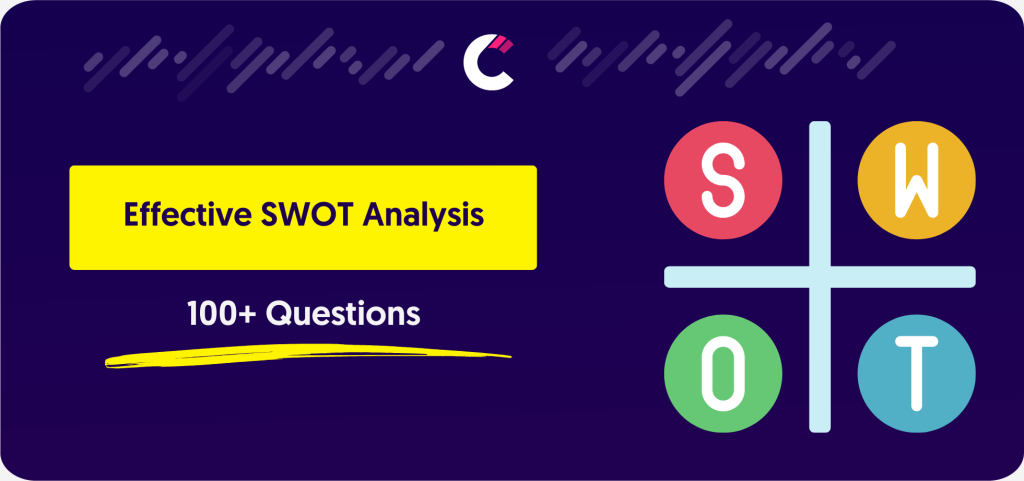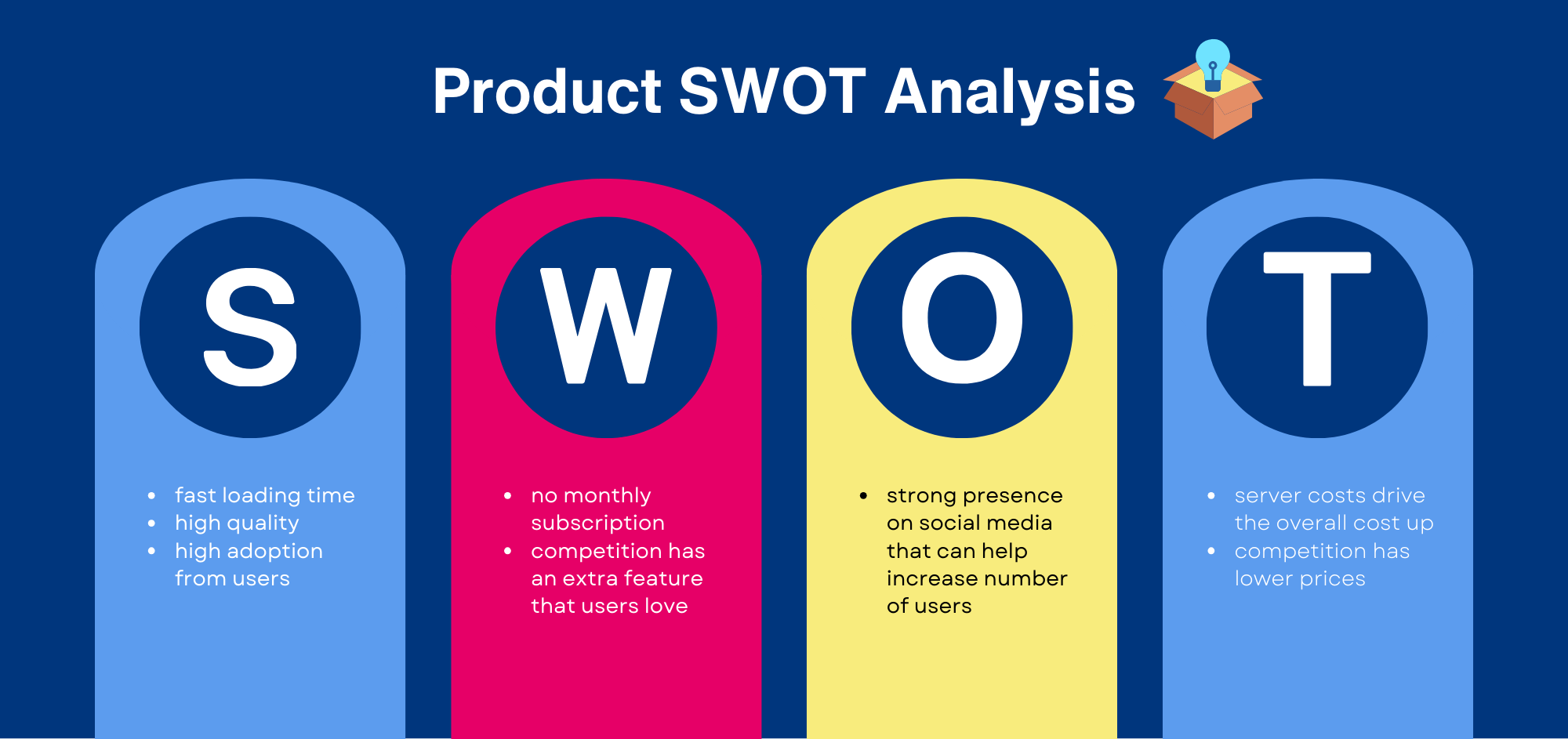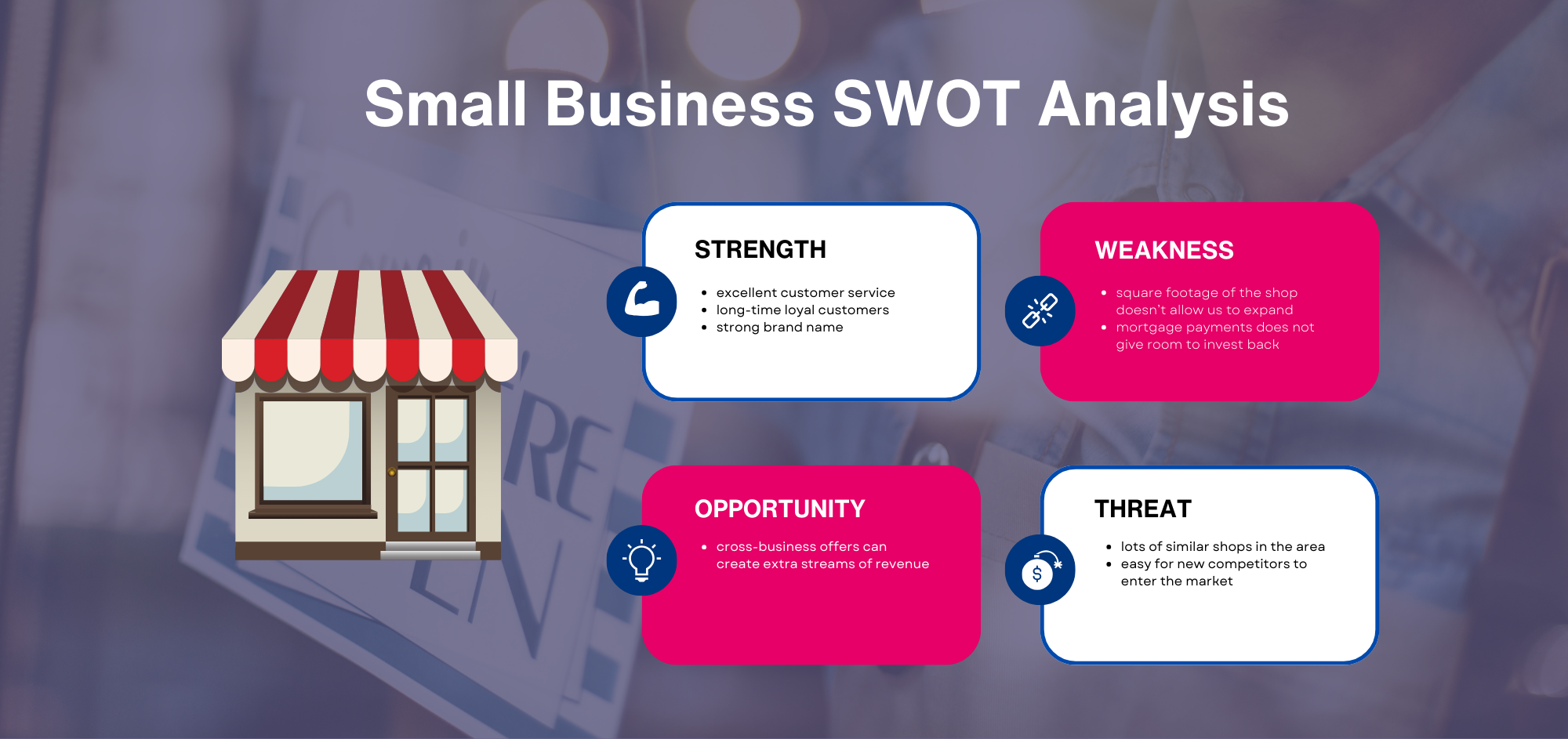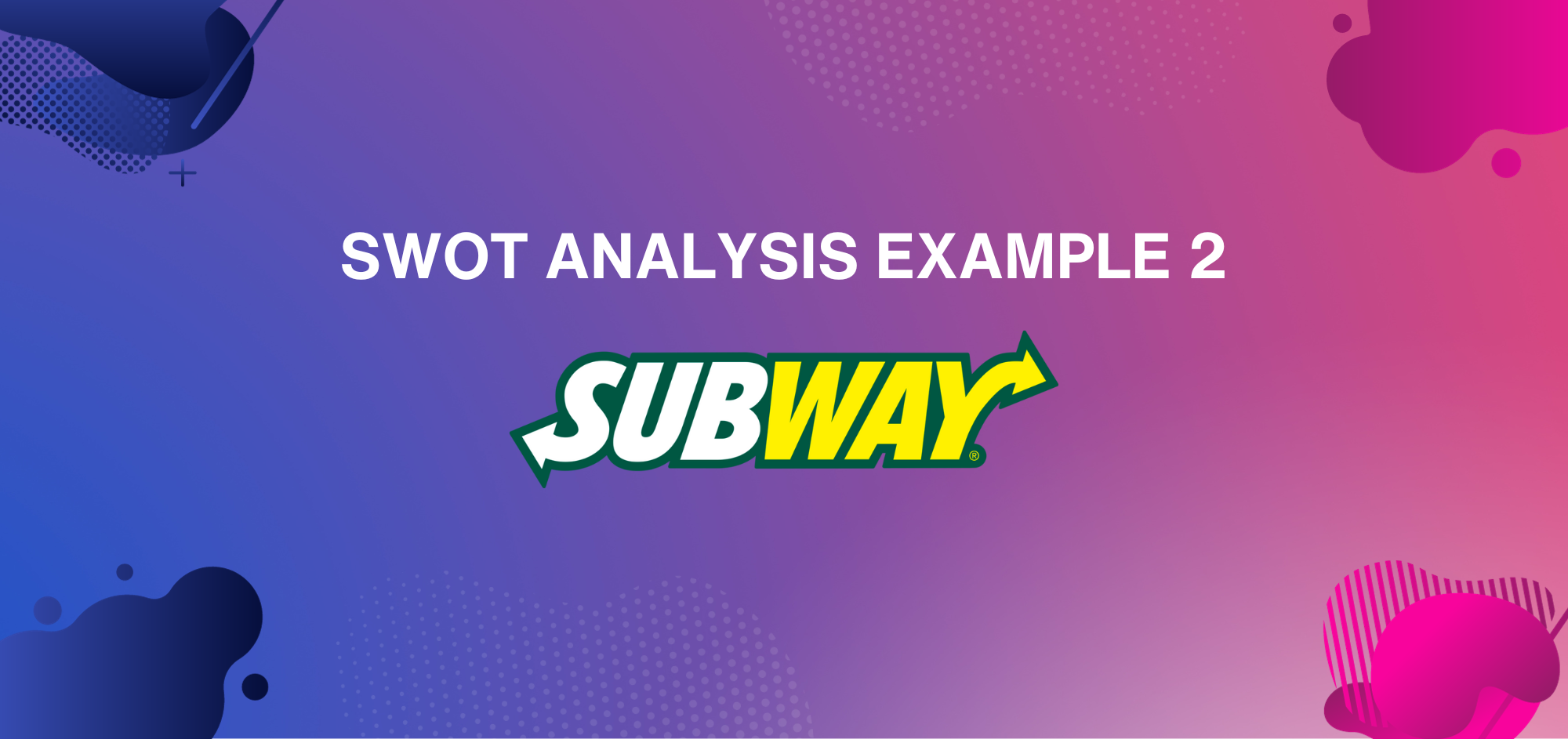
the need for SWOT analysis transcends beyond just the startup phase. It’s a crucial compass at every turn and twist of an organization’s journey, especially when standing at the crossroads of pivotal decisions. Interestingly, the power of SWOT analysis isn’t confined to boardrooms and business strategies alone. A growing number of individuals are harnessing this tool for personal development and decision-making. In this guide, we’ll delve into the art of asking the right questions—those that open doors to insights and opportunities, whether it’s for your business or personal growth. Let’s embark on a journey to uncover the most effective SWOT analysis questions that can illuminate paths and unlock potential.
Before we dive into the questions, let’s first understand the types of SWOT analysis. This tool is not a one-size-fits-all; it adapts to various contexts, each with its unique set of challenges and opportunities. From traditional business and market analyses to more focused areas like marketing, small business strategies, nonprofit objectives, and even personal growth, SWOT analysis morphs to fit the situation. It also plays a significant role in internal evaluations, such as human resources and team dynamics. This versatility makes it invaluable across different scenarios. In the following section, we’ll explore tailored questions for each of these types, helping you to apply SWOT analysis with precision and purpose

This type focuses on evaluating a business in relation to its market environment. It helps in understanding how a company stacks up against competitors and what market dynamics it should leverage or be wary of.

Here, the focus shifts to understanding your competitors' strengths, weaknesses, opportunities, and threats. This type is crucial for businesses aiming to gain a competitive edge.

This approach is centered around a specific product or service, assessing its strengths and weaknesses and identifying opportunities for improvement or innovation.

Tailored for marketing strategies, this type helps in identifying the internal and external factors that can impact marketing efforts.

Small businesses have unique challenges and opportunities, and this type of analysis is designed to address those specific needs.

For nonprofit organizations, SWOT analysis can shed light on how they can better achieve their missions amidst various challenges.

Focused on the internal environment of an organization, especially its human resources, this type helps in identifying internal strengths and weaknesses and opportunities for staff development and addressing potential threats.

This is particularly useful for assessing the dynamics and potential of a team within an organization.
Each type of SWOT analysis brings its own set of questions, adapted to extract the most relevant information for that particular context. As we explore over 100 SWOT analysis questions in the following sections, we’ll see how each type applies these questions to glean actionable insights.
Understanding the significance of asking the right questions in a SWOT analysis is crucial. It’s about more than just listing strengths, weaknesses, opportunities, and threats. The essence lies in how these aspects relate to each other and influence your specific situation, whether it’s a business, a nonprofit, or your personal life.
Take, for instance, a product SWOT analysis. The right questions can reveal much more than the product’s features and limitations. They can uncover how these characteristics position the product in the market, identify potential areas for innovation, and highlight opportunities for new market penetration or improved customer satisfaction.
For a business, targeted SWOT questions can similarly uncover nuances in market positioning and competitive landscapes. They can illuminate potential challenges and untapped market opportunities, guiding strategic planning and decision-making.
To make our point more clear let’s give an example of what a good swot analysis question and what a bad swot analysis question looks like:
Good Question Example: “How does our product differentiate from competitors in terms of innovation, usability, and customer satisfaction?”
Bad Question Example: “Is our product good?”
A good SWOT question is precise, contextually relevant, and designed to elicit detailed and actionable insights. In contrast, a bad question is often vague, overly broad, and unlikely to lead to useful strategic information.
Ultimately, the effectiveness of a SWOT analysis depends significantly on the quality and relevance of the questions posed. This understanding is crucial in unlocking the full potential of your competitor analysis.
Armed with an understanding of the importance of asking the right questions, let’s delve into the heart of our guide: over 100 SWOT analysis questions, carefully curated to cater to a wide range of needs. These questions are designed to be adaptable, whether you’re assessing a business, a specific product, a marketing strategy, or even the dynamics within a small business or nonprofit organization.
Each set of questions is tailored to draw out the most relevant insights for its specific context. For instance, questions for a business SWOT analysis might focus on market position, competitive advantage, and customer perception, while those for a product analysis could delve into innovation, user experience, and market need.
This section will not only list these questions but also guide you on how to apply them effectively. The goal is to provide you with a comprehensive toolkit that enables you to conduct a thorough and insightful SWOT analysis, regardless of your particular focus or industry. Let’s begin with the traditional business and market SWOT analysis questions.

In the realm of business and market analysis, a well-structured SWOT analysis can offer invaluable insights. Here are 12 traditional SWOT analysis questions, divided into strengths, weaknesses, opportunities, and threats, each designed to probe deep into the core aspects of a business and its market environment.
Strengths
Weaknesses
Opportunities
Threats

Competitor SWOT analysis is essential for understanding how your business stacks up against others in the industry. It helps in identifying areas where you can improve and opportunities you can exploit. Here are twelve questions, categorized into strengths, weaknesses, opportunities, and threats, to help analyze your competitors effectively.
Strengths
Weaknesses
Opportunities
Threats
Addressing these questions gives a comprehensive view of your competitive landscape, allowing for strategic planning and positioning to better meet market challenges and opportunities.

When conducting a SWOT analysis for a specific product or service, focusing on elements that directly impact its success and market position is crucial. Here are twelve questions to help dissect the strengths, weaknesses, opportunities, and threats associated with your product or service.
Strengths
Weaknesses
Opportunities
Threats
By exploring these questions, businesses can gain a more nuanced understanding of their product’s or service’s market position and strategize effectively to enhance its performance and appeal.

Marketing is a dynamic and critical component of business success. A SWOT analysis in this realm can provide deep insights into the effectiveness of your marketing strategies and identify areas for improvement. Here are twelve questions to guide your marketing SWOT analysis, focusing on identifying strengths, weaknesses, opportunities, and threats in your marketing efforts.
Strengths
Weaknesses
Opportunities
Threats
By answering these questions, businesses can better understand their marketing strengths and weaknesses, seize new opportunities, and mitigate potential threats. This leads to more informed, strategic, and effective marketing decisions.

Small businesses face unique challenges and opportunities, making a tailored SWOT analysis crucial for their success. Here are twelve questions designed to help small business owners assess their strengths, weaknesses, opportunities, and threats in the context of a smaller scale operation.
Strengths
Weaknesses
Opportunities
Threats
Addressing these questions allows small business owners to take a strategic approach, leveraging their unique strengths while identifying and mitigating potential risks. This analysis is key to fostering resilience and growth in the competitive business landscape.

Nonprofit organizations have distinct goals and challenges compared to for-profit businesses. A SWOT analysis for a nonprofit should focus on aspects that are crucial for its mission, sustainability, and community impact. Here are twelve questions tailored for nonprofits to evaluate their strengths, weaknesses, opportunities, and threats.
Strengths
Weaknesses
Opportunities
Threats
These questions are designed to help nonprofit organizations navigate their unique landscape, ensuring they stay mission-focused while addressing the practical realities of running an effective organization.

An internal SWOT analysis, especially focused on human resources, is crucial for understanding the dynamics within an organization. It can reveal insights into workforce capabilities, organizational culture, and internal processes. Here are twelve questions specifically designed for a human resources-focused SWOT analysis.
Strengths
Weaknesses
Opportunities
Threats
Addressing these questions helps organizations to strategically manage their human capital, ensuring that internal strengths are maximized while identifying and mitigating potential weaknesses and threats.

A team SWOT analysis focuses on the dynamics, strengths, weaknesses, opportunities, and threats within a specific team. This analysis is vital for enhancing teamwork, identifying areas for development, and leveraging the team’s collective strengths. Here are twelve questions designed for an effective team SWOT analysis.
Strengths
Weaknesses
Opportunities
Threats
By answering these questions, a team can gain a clearer understanding of its current state, identify areas for improvement, and develop strategies to become more cohesive, efficient, and effective in achieving its goals.
Answering SWOT analysis questions effectively is key to gaining valuable insights. Whether you’re conducting a SWOT analysis for a business, a product, or on a personal level, the way you respond to these questions can significantly impact the usefulness of the exercise. Here are some tips on how to approach answering SWOT analysis questions:
Be Honest and Objective: It’s crucial to be as honest and objective as possible. Overstating strengths or downplaying weaknesses won’t yield a realistic picture.
Use Data and Evidence: Where possible, support your answers with data and evidence. This could include customer feedback, sales data, performance metrics, or personal achievements.
Consider Different Perspectives: Try to look at the situation from different angles. For a business, this might mean considering customer, employee, and stakeholder perspectives. For personal analysis, think about how others might view your strengths and weaknesses.
Keep it Relevant and Specific: Focus on factors that are directly relevant to the context of your SWOT analysis. Generalities can dilute the effectiveness of your findings.
Think Both Short-Term and Long-Term: Consider how strengths, weaknesses, opportunities, and threats might play out in both the short-term and the long-term.
Be Open to Discovery: Be prepared to uncover surprises or insights you hadn’t considered before. The goal is to learn and adapt, not to confirm preconceived notions.
Prioritize: Especially in areas with numerous points (like strengths or opportunities), prioritize them in terms of their impact or relevance.
Seek Feedback: Don’t hesitate to seek feedback or insights from others, particularly in areas where you might have blind spots.
Reflect on Actionability: Think about how the insights gained from the SWOT analysis can be translated into actionable strategies.
Review and Update Regularly: Circumstances change, and so should your SWOT analysis. Regular reviews can help keep your strategies relevant and effective.
By following these guidelines, your responses to SWOT analysis questions can become a powerful foundation for strategic planning and decision-making.
Once you’ve answered your SWOT analysis questions, the next step is to use these insights for strategic planning. This process involves transforming the identified strengths, weaknesses, opportunities, and threats into actionable strategies. Here’s how you can effectively use SWOT questions for strategic planning:
Leveraging Strengths: Identify how you can use your strengths to take advantage of opportunities and mitigate threats. For instance, if a strength is a strong brand reputation, consider how it can be leveraged in marketing campaigns or new product launches.
Addressing Weaknesses: Develop plans to address weaknesses that may hinder your progress or make you vulnerable to threats. This could involve training, hiring new talent, or altering business processes.
Capitalizing on Opportunities: Look at the opportunities identified and develop strategies to exploit them using your strengths. This might involve expanding into new markets, developing new products, or adopting new technologies.
Mitigating Threats: Identify threats to your organization or personal goals and develop contingency plans. This might involve diversifying income sources, investing in new technologies, or building strategic partnerships to buffer against these threats.
Setting Goals and Objectives: Use the insights from the SWOT analysis to set specific, measurable, achievable, relevant, and time-bound (SMART) goals and objectives.
Resource Allocation: Determine what resources (time, budget, personnel) are needed to pursue the strategies you’ve identified. Make sure to allocate these resources in a way that maximizes your strengths and opportunities while minimizing weaknesses and threats.
Action Plan: Develop a detailed action plan for each strategy. This should include what actions need to be taken, who is responsible, timelines, and how success will be measured.
Monitor and Adjust: Once your strategies are in place, continuously monitor their effectiveness. Be prepared to make adjustments as needed, based on feedback and changing circumstances.
By thoughtfully applying the insights from your SWOT analysis to your strategic planning, you can create a robust framework for achieving your goals and navigating challenges effectively.
SWOT analysis plays a pivotal role in decision-making processes for businesses, teams, and individuals. By systematically evaluating strengths, weaknesses, opportunities, and threats, SWOT analysis provides a clear framework for informed decision-making. Here’s how it contributes to making better decisions:
Comprehensive Understanding: SWOT analysis helps in gaining a well-rounded view of the internal and external factors affecting your entity. This comprehensive understanding is crucial for making informed decisions.
Identifying Key Factors: It highlights the most critical strengths to leverage, weaknesses to address, opportunities to pursue, and threats to guard against, guiding decision-makers towards the most pressing areas of focus.
Risk Management: By identifying potential threats, SWOT analysis aids in proactive risk management. It allows for the development of contingency plans and strategies to mitigate these risks.
Capitalizing on Opportunities: It helps in recognizing and prioritizing opportunities that align with the entity’s strengths, enabling decision-makers to allocate resources effectively and pursue these opportunities strategically.
Addressing Weaknesses: SWOT analysis brings clarity to areas of weakness, facilitating decisions on where to invest in improvements, be it in skills, resources, or processes.
Strategic Alignment: Decisions made post-SWOT analysis are more likely to be aligned with the overall goals and strategy of the organization or individual, ensuring a cohesive and directed approach.
Encouraging Collaboration and Engagement: Involving various stakeholders in the SWOT analysis process promotes a culture of collaboration and collective decision-making. This leads to decisions that are more widely accepted and supported.
Facilitating Change Management: When significant changes are needed, SWOT analysis provides a solid rationale for the change, aiding in smoother implementation and adoption.
Future Planning: It also plays a crucial role in long-term strategic planning, helping decision-makers envision future paths and prepare accordingly.
In summary, SWOT analysis is an invaluable tool in the decision-making toolkit, offering a structured approach to evaluate situations, identify critical issues, and develop well-informed strategies and solutions.
To truly grasp the practical application of SWOT analysis, it’s insightful to explore how prominent companies implement this strategic tool. In this section, we delve into two notable examples from major U.S. brands, The Home Depot and Subway. These cases not only illustrate the real-world relevance of SWOT analysis but also offer relatable insights into how large-scale businesses utilize this framework to navigate their market landscapes. By examining the specific strengths, weaknesses, opportunities, and threats these companies face, we gain a clearer understanding of SWOT analysis’s impact on business strategy and decision-making.

The Home Depot:
As the world’s largest home improvement retailer, The Home Depot’s SWOT analysis revealed its strengths as being the largest in the industry, highly profitable, having a successful ‘Buy Online Pickup In-Store’ (BOPIS) strategy, offering value for money, and a wide variety of products. However, it also identified weaknesses such as its heavy reliance on the US market, aging infrastructure, and late adoption of eCommerce. The opportunities included expanding to more countries, increasing online sales, and focusing on the home decor section. Threats included growing competition, the risk of recession, and price deflation.
| Strengths | Weaknesses | Opportunities | Threats |
|---|---|---|---|
| Largest in the industry | Mostly based in the US | Expanding market to more countries | Growing competition |
| Highly profitable | Aging infrastructure | Increasing online sales | Recession |
| BOPIS strategy (Buy Online, Pickup In-Store) | Late adoption to eCommerce | Focus on the home decor section | Price deflation |
| Value for money | |||
| Wide variety of products |

Subway: Known for its submarine sandwiches, salads, and beverages, Subway’s SWOT analysis highlighted strengths like having the highest number of outlets among competitors, high brand loyalty, and the perceived health benefits of its products. Weaknesses included issues with brand value, varying customer satisfaction, and outdated outlet designs. Opportunities for Subway included offering more healthy options, introducing home delivery and drive-through services, and diversifying the menu. Threats involved competition from similar new restaurants and potential backlash that could harm brand reputation.
| Strengths | Weaknesses | Opportunities | Threats |
|---|---|---|---|
| Highest number of outlets among competitors | Brand value | Offer more healthy options | Similar new restaurants |
| High brand loyalty | Varying customer satisfaction | Home delivery and drive-through services | Potential backlash harming brand reputation |
| Health benefits of products | The old design of the outlets | Diversification of the menu |
In conclusion, SWOT analysis stands as an indispensable tool for strategic planning across various domains, be it in business, non-profits, or personal development. This comprehensive guide has walked you through over 100 tailored SWOT analysis questions, each designed to elicit deep insights for different scenarios. From understanding the types of SWOT analyses to learning how to effectively answer and use these questions for strategic planning, the guide provides a thorough blueprint.
Real-life examples from The Home Depot and Subway illustrate the practical application and success of SWOT analysis in making informed decisions and adapting to market dynamics. These cases highlight the importance of regularly conducting SWOT analyses to stay competitive and responsive to changing environments.
Whether you’re a business leader, a team manager, a small business owner, or an individual looking to grow personally, integrating SWOT analysis into your strategic planning can illuminate pathways to success. It’s a tool that not only helps in identifying where you are but also in charting where you could be. Remember, the effectiveness of a SWOT analysis is not just in the identification of strengths, weaknesses, opportunities, and threats but in the actions taken following the analysis.
Embrace SWOT analysis as part of your regular planning process, and you’ll find it an invaluable asset in navigating the complex and ever-changing landscapes of your professional and personal life.
Focus on questions that evaluate internal strengths and weaknesses, such as resources, capabilities, and areas for improvement. Also, consider external opportunities and threats like market trends, competition, and regulatory changes.
Questions in a balanced scorecard analysis should cover four perspectives: financial performance, customer knowledge, internal business processes, and learning and growth. Ask about metrics like revenue growth, customer satisfaction, operational efficiency, and employee development.
Yes, there are various tools and software available for conducting SWOT analysis, ranging from simple templates in Microsoft Word or Excel to more sophisticated strategic planning software that offers SWOT analysis features.
Absolutely. It's crucial to tailor SWOT questions to the specific context and needs of each organization. This ensures that the analysis is relevant and provides actionable insights